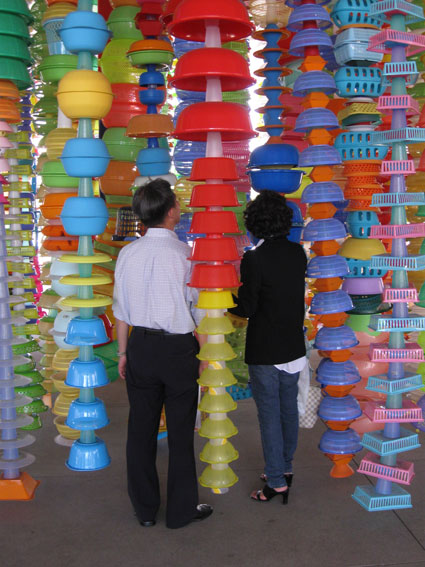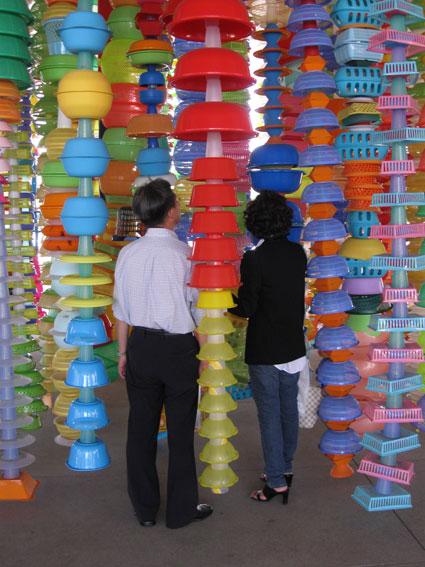As a Korean-American, it’s been especially gratifying for me to work on Your Bright Future, but I had been curious to see what my parents—first-generation Korean immigrants—would think of the show.
Both my father and mother graduated from Hongik University in Seoul, Korea—the same school where many of the exhibition artists also received their bachelor’s degrees—with architecture and arts degrees, respectively. They finally had a chance to visit the museum last week and were taken away by the show. Having studied architecture, my dad could not tear himself away from Do Ho Suh’s Fallen Star 1/5, admiring every minute, handmade detail. My mom connected most with Choi Jeong-Hwa’s HappyHappy as she thought it embodies what she considers to be the best kind of art—one that is accessible to those of all ages and backgrounds.

Overall, the observation that continued to come up during my parents’ visit was how Your Bright Future, in a way, reflects how much Korean culture has changed over the past few decades. My parents were in awe of the freedom of form and expression in all of the works—something they did not experience when they were in school. But more generally, viewing a contemporary Korean show in the U.S.—a first for my parents who have lived here for more than thirty years—served as a reminder of how globalized Korean culture has become. This Korean wave may be more prominent in pop culture with musicians and actors making recent debuts in America, and more locally, with Korean restaurants, and even food trucks, springing up outside of Koreatown. And the wave seems to continue here at LACMA, as we reopen our traditional Korean galleries on Sept. 10, host a film series dedicated to contemporary filmmaker Hong Sang-soo, and present a late night event celebrating Korean art, film, music, and dance from all generations.
Christine Choi



